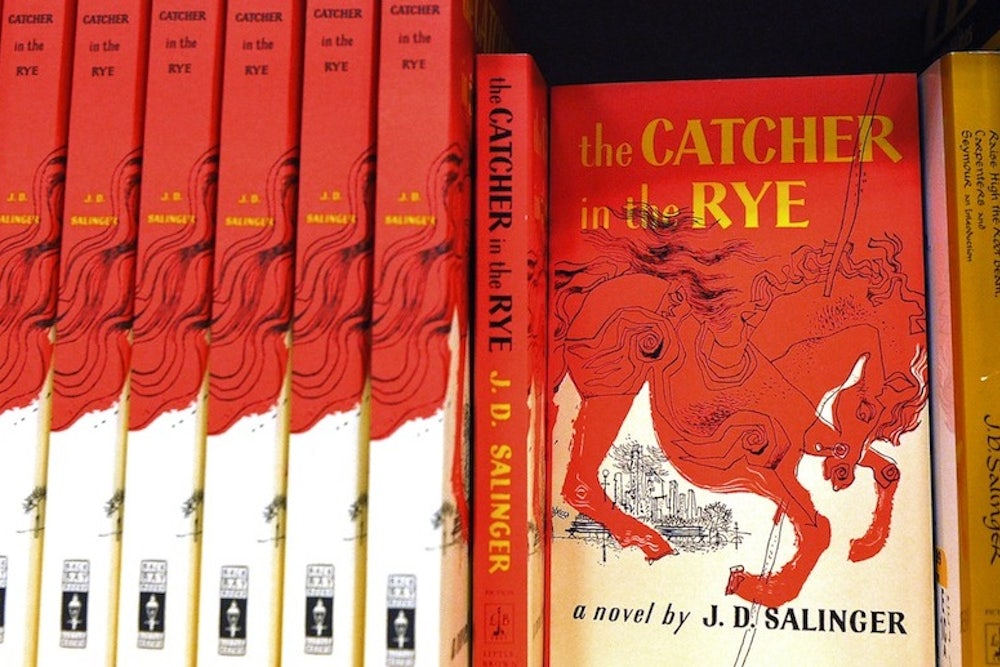The New York Times' first review of The Catcher in the Rye (which is written in the style of the novel itself and will annoy the hell out of you) doesn't actually have much to say about the work that would become a worldwide phenomenon and one of the most commonly cited "favorite books" of all time. It runs through the general plotline (using the word "crumby" six times, including in the title "Aw, the World's a Crumby Place"), notes a few complaints about its length, but then concludes with the thought that the novel is worth reading all over again.
The Times went on the next day to write a glowing, exuberant review of Salinger's first novel. Calling it a "perilous undertaking ... that has been successfully achieved," the reviewer goes on:
Mr. Salinger's rendering of teen-age speech is wonderful: the unconscious humor, the repetitions, the slang and profanity, the emphasis, all are just right. Holden's mercurial changes of mood, his stubborn refusal to admit his own sensitiveness and emotions, his cheerful disregard of what is sometimes known as reality, are typically and heart-breakingly adolescent. ...
Certainly you'll look a long time before you'll meet another youngster like Holden Caulfield, as likable and, in spite of his failings, as sound.
This first review, along with dozens upon dozens of other gushing essays, accolades, inclusion on nearly every "Best Books of the Twentieth Century" list, and one of the best word-of-mouth buzz campaigns in literary history, cemented its reputation as the defining novel of teenage angst and alienation.
But The Catcher in the Rye is far from a perfect novel. The very teenagerishness that the Times celebrates isn't nearly as clever or relevant today, on the 63rd anniversary of Catcher's publication. That repetition (everyone is a "damn phony" to Holden Caufield) is wearing to contemporary audiences, as Jennifer Schuessler noted in 2009. “Holden Caulfield is supposed to be this paradigmatic teenager we can all relate to, but we don’t really speak this way or talk about these things,” noted one teacher Schuessler interviewed.
It's annoying to hear we told you so—but, we told you so. The New Republic's initial review, published July 16, 1951, perfectly anticipated all the gripes and complaints readers would ironically come to have about Catcher's gripey and complaining protagonist. While noting that the novel is "brilliant," reviewer Anne L. Goodman really let Salinger have it, writing:
The book as a whole is disappointing, and not merely because it is a reworking of a theme that one begins to suspect must obsess the author. Holden Caulfield, the main character who tells his own story, is an extraordinary portrait, but there is too much of him. ...
In the course of 277 pages, the reader wearies of [his] explicitness, repetition and adolesence, exactly as one would weary of Holden himself. And this reader at least suffered from an irritated feeling that Holden was not quite so sensitive and perceptive as he, and his creator, thought he was. In any case he is so completely self-centered that the other characters who wander through the book—with the notable exception of his sister Phoebe—have nothing like his authenticity. ... In a writer of Salinger's undeniable talent, one expects something more.
Anne L. Goodman, FTW.
